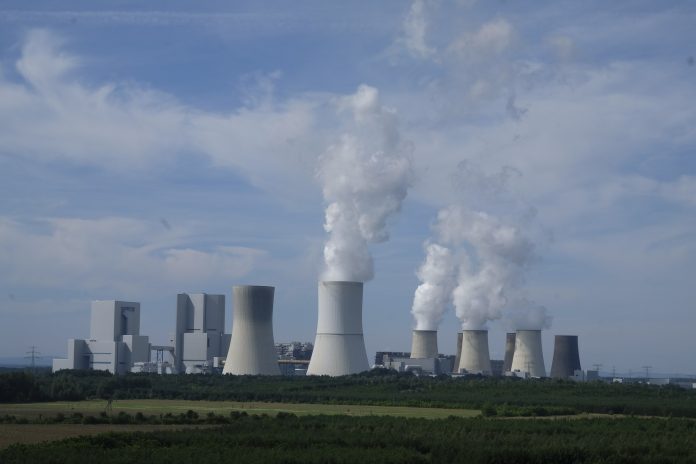Germany reduced overall electricity production from traditional sources by 38 percent since 2002, pursuing apparent deindustrialization.
By Robert Romano
Germany has reduced overall electricity production from traditional sources by 38 percent, or 198.1 million Megawatt Hours (MWh) since 2002, according to data from the Federal Statistical Office of Germany.
Coal and nuclear led the collapse of Germany’s electric grid, from 121 million MWh for coal and 164.8 million MWh for nuclear a year in 2002, to just 51.1 million MWh for coal and 69.1 million MWh for nuclear in 2021.
In other words, coal electricity production was cut by 57.7 percent and nuclear electricity production was cut by 58 percent in just 20 years.
This has been offset by massive increases in solar and wind, and also a substantial increase of natural gas dependency, from 41.7 million MWh in 2002 to 53.4 million MWh in 2021. Today, wind produces 63.7 million MWh a year and solar another 51 million MWh a year. The overall grid now stands at 41 percent renewable.
This is deindustrialization, plain and simple and a triumph of environmentalism for certain that has shifted German households to subsistence solar paneling to offset a dramatic decline of Europe’s industrial base, making Germany and Europe’s current energy crisis entirely self-inflicted as it became unprofitable for large utilities to function. Now, manufacturing is on the verge of collapse in Europe’s largest economy as the world prepares for another recession soon after Covid.
But the real problem for Germany is heat. In 2003, it produced 46.6 million MWh worth of heat via natural gas, and it needed another 50 million MWh worth of natural gas in 2021, which is current demand ayear to produce about half of its heat.
This is partially the context the war in Ukraine, and the removal of Russia as a supplier of natural gas to Germany with the sabotage of the Nord Stream 1 and Nord Stream 2 pipelines, must be understood.
Nord Stream 1 had supplied 1.9 trillion cubic feet a year to Europe, and 55 percent of Germany’s gas alone, and Nord Stream 2 would have doubled the current pipelines’ distribution of 1.9 trillion cubic feet a year to 3.9 trillion cubic feet a year. The pipelines are owned by Nord Stream AG, a subsidiary of Russia state-owned energy giant Gazprom.
In 2005, former German Chancellor Gerhard Schroder approved construction of the Nord Stream 1 pipeline, which was finished and went online in 2012. Nord Stream 2 was built from 2018 and finished construction in Sept. 2021. After the war in Ukraine began, Nord Stream 2 was disapproved by Germany and Russia cut off supplies from Nord Stream 1.
This is a cautionary tale for the West, where green mania has led to massive cuts in terms of electricity generation, consumption and overall industrial output, which has been ceded to Asia. And now the shift to carbon-free economies is threatening the very security of Europe. What this invites, besides internal energy rationing by regulators, is external energy rationing imposed by adversaries who can inflict a global recession just by turning off the gas. Now, with winter fast approaching, it’s too late.
Originally published by the Daily Torch. Republished with permission.
Robert Romano is the Vice President of Public Policy at Americans for Limited Government Foundation.
To read more about German power production, click here.
To red more about Europe’s energy crisis, click here.


























